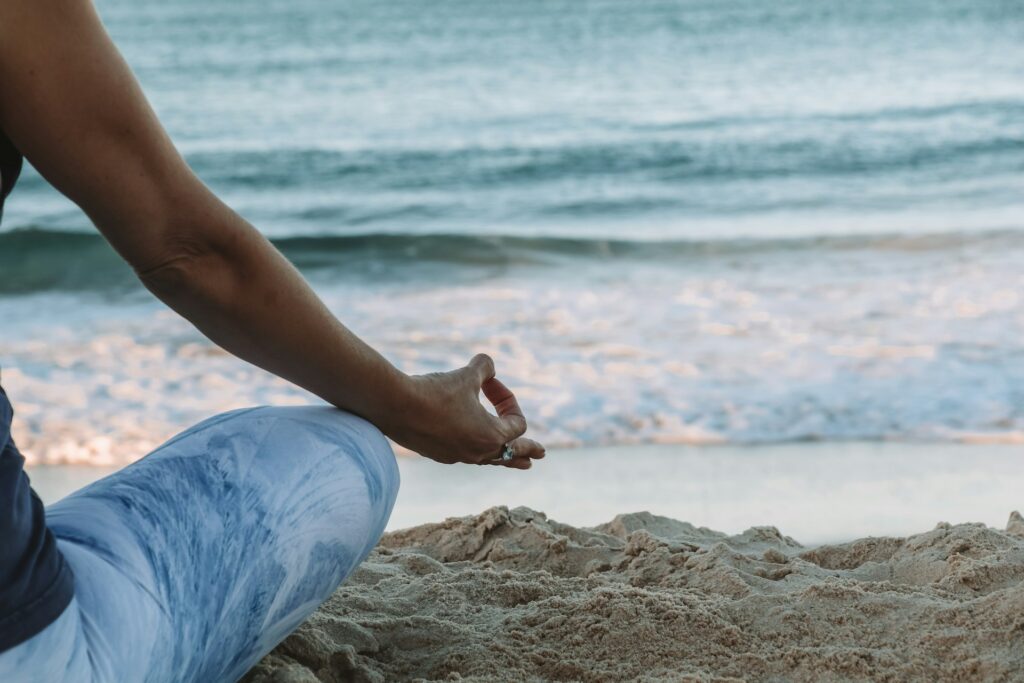Ever felt winded after carrying groceries up a flight of stairs? Or noticed your arms giving out halfway through a weekend project? There’s a surprisingly simple reason why.
What Exactly Is Muscle Endurance (And Why Should You Care)?
Think of muscle endurance as your body’s ability to keep going when the going gets tough. Unlike that burst of strength you need to lift a heavy box once, muscle endurance is what lets you carry multiple loads without turning into a wobbly mess.
It’s all about “improving the ability to carry out daily functional activities, such as lifting heavy items” without feeling completely drained afterward. Your muscles learn to work efficiently over longer periods, using oxygen more effectively and clearing out fatigue-causing waste products faster.
But here’s what makes muscle endurance different from just being “strong”: You might be able to deadlift an impressive amount at the gym, but if you can’t maintain good form while raking leaves for 30 minutes, your muscle endurance needs work. It’s the difference between having a powerful engine and having one that runs smoothly mile after mile.
The Real-World Benefits You’ll Actually Notice
Let’s get practical. Better muscle endurance doesn’t just sound good on paper—it shows up in ways that matter in your actual life:
Your morning routine becomes smoother. Ever notice how some days even getting dressed feels like a workout? When your muscle endurance improves, those seemingly simple tasks—reaching into high cabinets, bending to put on shoes, carrying laundry baskets—stop feeling like challenges.
Weekend projects become enjoyable again. Remember when you used to tackle home improvement projects with excitement instead of dread? Improved endurance means you can paint a room, organize a closet, or work in the garden without paying for it with days of soreness.
Playing with kids or grandkids gets easier. Running around at the park, giving piggyback rides, or even just keeping up during family activities becomes natural rather than exhausting.
Your posture improves throughout the day. When your core and back muscles have better endurance, you’re less likely to slouch at your desk or feel that familiar ache between your shoulder blades by 3 PM.
The Science Made Simple: How Your Muscles Actually Adapt
Here’s something fascinating: Your body has different types of muscle fibers, and “slow-twitch fibers are seen in high abundance” in people who excel at endurance activities. These fibers are like the marathon runners of your muscle world—they might not be the flashiest, but they can keep going when everything else quits.
When you train for endurance, several cool things happen inside your muscles. They develop more mitochondria (think of these as tiny power plants), improve their blood supply, and get better at using oxygen. Your nervous system also becomes more efficient, learning to activate muscles in patterns that waste less energy.
The best part? These adaptations happen relatively quickly. Within just a few weeks of consistent activity, you’ll likely notice tasks that used to tire you out becoming more manageable.
Your Everyday Endurance Workout Plan
Now for the good stuff—practical exercises you can do without fancy equipment or gym memberships. The beauty of building functional muscle endurance is that the best exercises often mimic movements you already do every day.
Foundation Builders
Wall Sits with a Twist Stand with your back against a wall, slide down until your thighs are parallel to the floor, and hold. But here’s the twist: start with just 15-20 seconds and focus on perfect form rather than suffering through a longer hold. Gradually add 5 seconds each week. This builds the exact kind of leg endurance you need for stairs, standing while cooking, or walking through airports.
Modified Planks That Actually Work Forget the idea that planks have to be torture. Start on your knees if needed, or against a wall if getting on the floor is uncomfortable. The goal is to maintain good alignment for increasing periods. Your core endurance will improve, which translates directly to better posture and reduced back fatigue during daily activities.
Step-Up Sequences Use your stairs, a sturdy step, or even a curb. Step up with one foot, bring the other up to meet it, then step back down. Start with 5-10 repetitions per leg and gradually increase. This mirrors the movement pattern of climbing stairs but lets you control the intensity.
Functional Movement Patterns
Carrying Variations Practice carrying objects in different ways—at your side like groceries, in front of you like a laundry basket, or overhead like putting things on high shelves. Use water jugs, books, or actual household items. Start light and focus on maintaining good posture while walking around your house.
Squatting Endurance Perfect your squat form first, then gradually increase repetitions. But think beyond just up-and-down movements. Practice squatting to pick things up, holding a squat position while organizing low shelves, or doing partial squats that mimic sitting and standing from chairs.
Reaching and Stretching Combinations Combine arm reaches with gentle twisting movements, mimicking activities like reaching into the back seat of your car or getting items from high shelves. Hold these positions briefly and repeat, building endurance in the smaller stabilizing muscles that often get overlooked.
The 15-Minute Daily Routine
Here’s a realistic routine you can actually stick with:
Minutes 1-3: Gentle Warm-Up Arm circles, leg swings, and easy walking in place. Nothing fancy—just wake up your muscles and joints.
Minutes 4-8: Foundation Work Choose two exercises from the foundation builders above. Alternate between them with minimal rest. For example, 30 seconds of wall sits, followed by 30 seconds of modified planks, repeat for 5 minutes total.
Minutes 9-13: Functional Movements Pick one or two carrying or movement exercises. Focus on control and good form rather than speed or intensity.
Minutes 14-15: Cool Down Gentle stretching for any areas that feel tight, with a focus on breathing deeply and relaxing.
Making It Stick: The Psychology of Sustainable Change
Let’s be honest—knowing what to do and actually doing it consistently are two very different things. Here’s how to make endurance training a natural part of your life rather than another item on your guilt list.
Start stupidly small. I mean it. If you think you should do 10 wall sits, start with 3. If 15 minutes seems reasonable, begin with 5. The goal is to build a habit that feels so easy you’d feel silly not doing it.
Tie it to existing routines. Instead of creating a whole new workout time, attach endurance exercises to things you already do. Do wall sits while your coffee brews. Practice carrying positions while doing actual household tasks. Do modified planks during TV commercial breaks.
Focus on how you feel, not how you look. The mirror might not show dramatic changes quickly, but you’ll likely notice functional improvements within weeks. Pay attention to climbing stairs without getting breathless, or standing for longer periods without discomfort.
Track the right things. Instead of obsessing over reps or time, keep a simple log of daily activities that feel easier. “Carried all the groceries in one trip without stopping to rest” is a much more meaningful victory than arbitrary exercise numbers.
Common Mistakes That Slow Your Progress
Confusing muscle endurance with cardio endurance. Running might improve your cardiovascular fitness, but it won’t necessarily help you paint a ceiling or carry boxes. Functional fitness “strengthens your muscles to prepare them for everyday tasks and activities” in ways that general cardio alone can’t.
Going too hard, too fast. Muscle endurance is built gradually. If you’re sore for days after exercising, you’ve likely pushed too hard. The goal is consistent, moderate effort that you can sustain long-term.
Ignoring form for higher numbers. It’s better to do 5 perfect wall sits than 15 wobbly ones. Good form ensures you’re building the right movement patterns and reduces injury risk.
Focusing only on obvious muscle groups. Don’t forget about the smaller stabilizing muscles in your hips, shoulders, and core. These often fatigue first during daily activities and benefit enormously from endurance training.
Adapting for Different Starting Points
If you’re dealing with joint stiffness or discomfort: Start with supported versions of exercises. Use chairs for support during squats, do planks against a wall instead of on the floor, and focus on range of motion that feels comfortable. The goal is consistent movement, not pushing through pain.
If you’re already fairly active: You might need to focus on specific muscle groups that lag behind others. Many people have strong legs but poor core endurance, or good upper body strength but limited carrying capacity.
If time is your biggest challenge: Remember that muscle endurance can be built throughout the day in small increments. Two-minute exercise breaks scattered throughout your day can be just as effective as one longer session.
The Ripple Effects You Didn’t Expect
As your muscle endurance improves, you might notice changes beyond just feeling less tired during activities. Many people report better sleep quality, likely due to the moderate physical activity and reduced daily fatigue. Others find they’re more willing to be spontaneous—saying yes to impromptu walks or weekend activities they might have avoided before.
There’s also something psychologically powerful about feeling capable in your own body. When daily tasks become easier, it often translates to increased confidence in trying new activities or taking on projects you might have avoided.
Your Next Steps
Building functional muscle endurance isn’t about becoming an athlete or dramatically transforming your body—it’s about making your daily life feel more effortless and enjoyable. The exercises and strategies outlined here are designed to fit into real life, with real schedules and real limitations.
Start with just one or two exercises that appeal to you. Do them consistently for two weeks, paying attention to how daily activities feel. Then gradually add more variety or intensity as your body adapts.
Remember, the goal isn’t perfection—it’s progress. Every wall sit, every mindful carrying practice, every moment you choose movement over stillness is building the endurance that will serve you in countless daily moments.
Your future self, effortlessly carrying groceries up the stairs and tackling weekend projects with energy to spare, will thank you for starting today.

Disclaimer: This article is for informational and educational purposes only and does not constitute professional medical, fitness, or health advice. The information provided should not be used for diagnosing or treating any health condition or physical limitation. Always consult with qualified healthcare professionals before beginning any exercise program, especially if you have existing health conditions, injuries, or concerns about your physical capabilities. Individual results may vary, and what works for one person may not be suitable for another. The author and publisher are not responsible for any adverse effects or consequences resulting from the use of the information presented in this article.
Sources and References:
- Garage Gym Reviews, “Muscular Endurance Exercises: Tips From an Olympian,” March 2024
- Medical News Today, “What is muscular endurance and how to improve it,” January 2021
- Healthline, “Why Functional Fitness Is Important for Everyone,” April 2020
- National Institute on Aging, “Exercise and physical activity” guidelines
- Hydrow, “10 Muscle Endurance Exercises to Add to Your Fitness Routine,” August 2024



